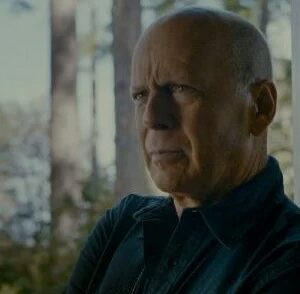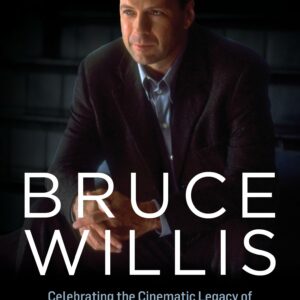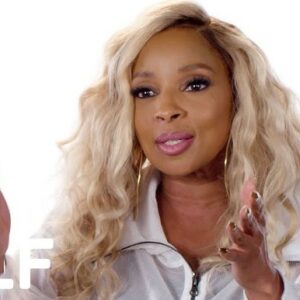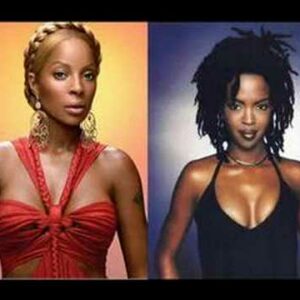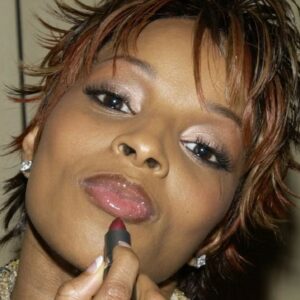Mary J. Blige’s story is one of undeniable grit and raw talent, the tale of a woman who transcended a tough upbringing in the Schlobohm Housing Projects of Yonkers, New York, to become the reigning Queen of Hip-Hop Soul. Blige grew up in a household filled with pain—her parents separated when she was young, leaving her mother to raise Blige and her siblings in an unforgiving environment. The tumultuous life she experienced early on would deeply influence her music, allowing her to channel that pain and turmoil into her craft, ultimately resonating with millions of listeners who found solace and empowerment in her voice.
Blige’s career launched when Uptown Records’ Sean “Diddy” Combs took notice of her demo tape, a cover of Anita Baker’s “Caught Up in the Rapture.” Diddy’s vision for Blige was revolutionary, blending the grit of streetwise hip-hop with the emotional depth and timeless soul of R&B, creating a genre all its own. With the release of her debut album What’s the 411? in 1992, Blige set the stage for what would become a legacy in the making. Her raspy, soul-baring voice sang of heartbreak, struggle, and survival, connecting with audiences on an intimate level. It wasn’t just music—it was a movement. The vulnerability in her lyrics coupled with the hip-hop beats made her stand out, and in the process, she became the voice of a generation.
Yet, despite her meteoric rise, the journey wasn’t smooth. As her fame skyrocketed, Blige battled personal demons, including drug addiction, toxic relationships, and deep emotional pain. By the time her second album My Life was released in 1994, the struggles were on full display. The album was darker, more introspective, and bled with Blige’s personal torment. Her pain was palpable in every note, and that rawness connected her with fans who were going through their own hardships.
However, by 1997, the Mary J. Blige who stepped into the studio to create Share My World was ready for change. After years of publicly sharing her pain, Blige was on a path to healing and self-discovery. Share My World was more than just a title—it was a declaration. She was no longer the same woman who sang of despair. Now, she had a renewed sense of self, a clearer vision, and was ready to share that journey with the world.
A Shift in Style and Tone
Share My World was a pivotal album that showcased a distinct shift in Blige’s musical style and personal narrative. Her earlier work, especially on What’s the 411? and My Life, was known for its gritty, raw emotion. These albums reflected the harsh realities of Blige’s life, full of heartbreak and struggle. But Share My World was different. It marked the beginning of a more polished, sophisticated sound, reflecting Blige’s personal growth and her desire to move beyond the pain of her past.
The production on Share My World was smoother and more refined, signaling Blige’s evolution as an artist who could straddle the line between R&B and mainstream pop. While still maintaining the soulful edge that had endeared her to fans, Blige embraced a more radio-friendly sound, which helped expand her audience. The album offered a broader emotional palette. There was still vulnerability and introspection, but there was also hope, empowerment, and a sense of peace that had been missing in her earlier works. Share My World was not just an album of survival but of triumph.
Collaboration with Top Producers
One of the most significant changes with Share My World was Blige’s decision to collaborate with some of the most respected and high-profile producers in the music industry. This was a major move that helped elevate the album to a new level of production quality and sound. The album featured production by the likes of Babyface, R. Kelly, Jimmy Jam, Terry Lewis, and Rodney Jerkins. These collaborations added a new dimension to Blige’s music, enhancing its mainstream appeal while still keeping the essence of what made her unique.
Working with Babyface, for example, brought a lush, sophisticated sound to tracks like “Missing You.” Known for his work with Whitney Houston, Toni Braxton, and Boyz II Men, Babyface’s signature smoothness was a perfect complement to Blige’s more textured vocal style. R. Kelly, one of the leading R&B artists and producers of the time, contributed to the album with the hit single “It’s On,” adding an infectious, radio-friendly groove. Jimmy Jam and Terry Lewis, legendary producers who helped shape the sound of Janet Jackson’s iconic career, added a layer of polish and professionalism to the album, particularly on songs like “Love Is All We Need.”
These collaborations marked a significant moment in Blige’s career, allowing her to grow beyond the raw emotion of her earlier albums and into a more mature, multifaceted artist. The high-profile production team didn’t overshadow Blige’s unique voice—instead, they amplified it. They helped her refine her sound without diluting the authenticity that had made her a star in the first place.
Personal Growth Reflected in Lyrics
Share My World is not only a reflection of Blige’s growth as an artist but also as a person. The album’s lyrics explore themes of healing, self-reflection, and personal growth, marking a shift from the pain and struggle that dominated her earlier work. While My Life was a cathartic release of the emotional turmoil Blige had endured, Share My World signaled a new chapter in her life—one of recovery and self-discovery.
The songs on Share My World are deeply personal, but they also carry a universal message of empowerment. Tracks like “Everything” and “Seven Days” deal with love, but from a more balanced, healthier perspective. There’s a sense of clarity and strength in Blige’s voice that hadn’t been as prominent in her previous albums. She was no longer just surviving—she was thriving.
In the song “Not Gon’ Cry,” for instance, Blige delivers a powerful message about resilience and self-worth. The song, which was featured on the soundtrack for Waiting to Exhale, became an anthem for women who had experienced betrayal and heartbreak. But rather than wallowing in despair, Blige’s message was clear: she was done crying, done suffering, and ready to move on.
The album’s title track, “Share My World,” is a declaration of vulnerability and trust. Blige is opening up to her listeners, sharing not just her pain but her triumphs. The song’s uplifting, mid-tempo groove reflects Blige’s newfound optimism, while the lyrics speak to the strength that comes from embracing one’s true self.
Chart-Topping Success
Share My World was not just a critical success—it was a commercial triumph as well. The album debuted at No. 1 on the Billboard 200, marking Blige’s first album to top the chart. The lead single, “Love Is All We Need,” featuring Nas, became a hit, reaching No. 1 on the Hot R&B/Hip-Hop Songs chart. Other singles like “I Can Love You,” a collaboration with rapper Lil’ Kim, and “Everything” continued to climb the charts, solidifying Blige’s status as a dominant force in the music industry.
The success of Share My World was a turning point for Blige, catapulting her to new heights of fame and establishing her as one of the leading voices in R&B. The album’s crossover appeal helped Blige reach a broader audience, including fans of mainstream pop, without alienating her core R&B base.
Critical Acclaim
While commercial success is important, what truly set Share My World apart was the overwhelming critical acclaim it received. Critics praised the album for its maturity, emotional depth, and Blige’s evolution as an artist. Many noted the album’s versatility, highlighting Blige’s ability to seamlessly blend genres and styles, from hip-hop to soul to pop, without losing the authenticity that had made her a star.
Reviewers also applauded Blige’s vocal performance on the album, noting her growth as a singer. Her voice was stronger, more controlled, and more confident than ever before. Share My World showcased Blige not only as a powerful vocalist but also as a storyteller capable of conveying complex emotions with nuance and subtlety.
Cultural Impact
More than two decades after its release, Share My World remains one of the most influential albums in R&B history. Its blend of soul, hip-hop, and pop helped shape the sound of the late ’90s and early 2000s, influencing a new generation of artists. Blige’s willingness to be vulnerable and share her personal journey through her music created a blueprint for artists who followed in her footsteps, from Beyoncé to Alicia Keys to Rihanna.
But beyond its musical impact, Share My World also had a profound cultural impact. It helped shift the narrative around Black women in music, portraying them not just as entertainers but as complex, multi-dimensional individuals with stories worth telling. Blige’s raw, unfiltered expression of her pain, joy, and growth resonated with audiences of all backgrounds, making her an icon not just of R&B, but of empowerment and resilience.
In the end, Share My World is more than just an album—it’s a testament to Mary J. Blige’s journey of survival, healing, and triumph. It’s a declaration of self-worth, a message of hope, and a reminder that no matter how dark the past, the future is always bright when you have the courage to share your world.
